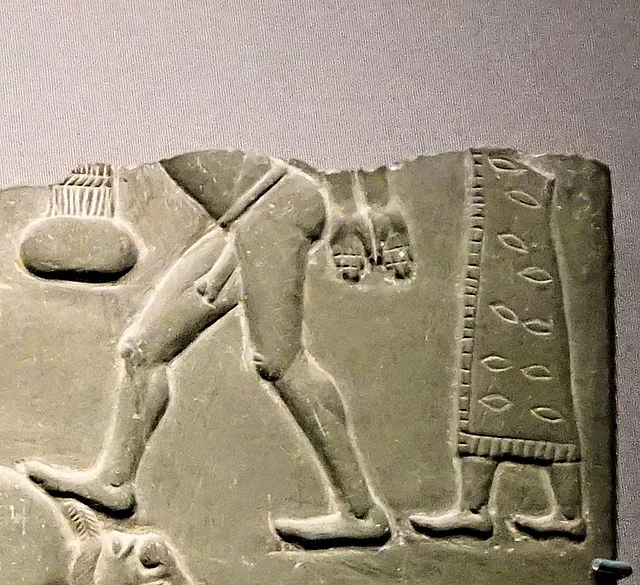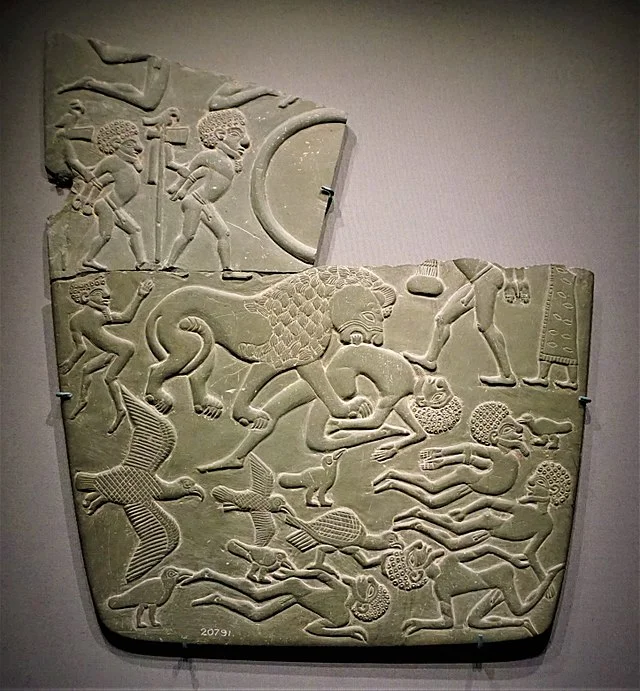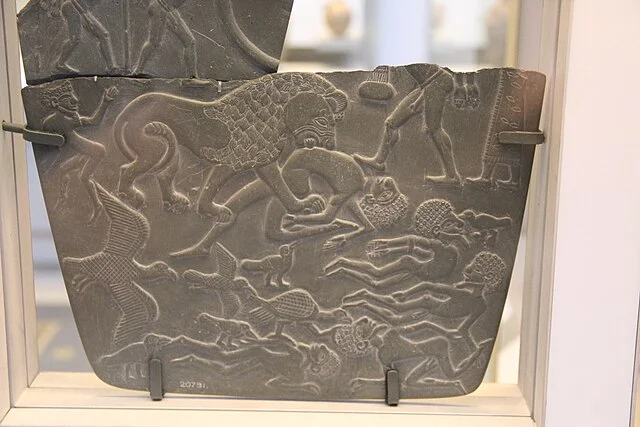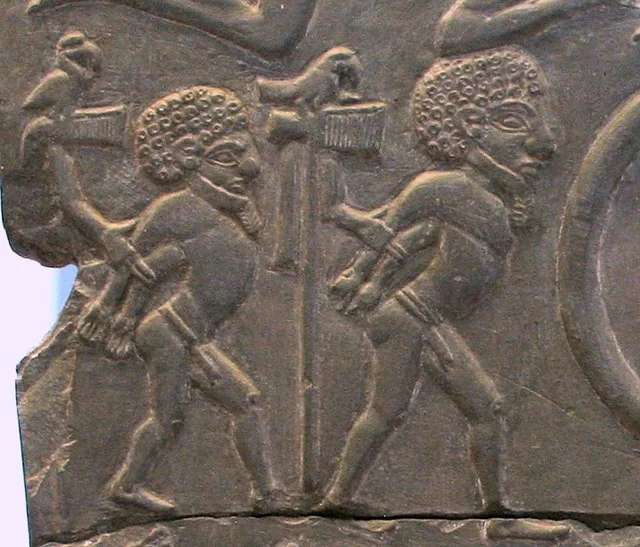The Battlefield Palette is an ancient Egyptian cosmetic palette dating to the Naqada III period (around 3100 BC). This significant artifact is part of a group of ceremonial palettes, which were used for grinding and mixing cosmetics in early Egyptian culture. However, over time, these palettes became more symbolic, reflecting important historical events and cultural practices.
Get your dose of History via Email
Historical Context

The Naqada III period marked the final phase of pre-dynastic Egypt. It preceded the unification of Upper and Lower Egypt under a single pharaoh. During this time, artistic depictions began to move beyond practical use and started representing political and military events.
The Battlefield Palette reflects this cultural shift. Instead of merely being a tool for grinding cosmetics, it became a visual record of military conflict, showcasing the rising power of early Egyptian kings.
Description of the Palette

The palette is made of greywacke stone and is approximately 50 cm high. Its surface is engraved with scenes of warfare, including defeated enemies and wild animals. The carvings show warriors armed with clubs and spears, along with several animals, possibly symbolizing chaos or the enemies of Egypt. The most notable feature is the depiction of slain soldiers, some with their arms bound and others with animals attacking them.
The arrangement of figures on the palette is methodical, indicating the Egyptians’ early use of hierarchical order in their artwork. Victorious figures appear larger and more prominent, reinforcing the importance of the victorious ruler or military leader.
Symbolism and Interpretation

The Battlefield Palette likely served a ceremonial purpose, perhaps used to commemorate a military victory. The depictions of fallen soldiers, bound captives, and wild animals may symbolize Egypt’s enemies. The violent imagery also reflects the chaotic nature of warfare at the time.
Some scholars believe the palette symbolizes the early struggles for power between different Egyptian factions. Others suggest it represents a broader narrative of Egyptian dominance over their neighbors. The detailed animal motifs may hold symbolic meaning related to chaos and control, themes commonly seen in later Egyptian art.
Importance in Egyptian Art

The Battlefield Palette provides a glimpse into early Egyptian society’s political and military development. It highlights the increasing centralization of power and the role of warfare in state formation. This palette, along with other ceremonial palettes like the Narmer Palette, marks the beginning of historical documentation in Egypt.
Artistic depictions on the palette set a precedent for later Egyptian art. The hierarchical scale, the portrayal of enemies, and the emphasis on order versus chaos became common themes in Egyptian visual culture throughout the dynastic period.
Conclusion
The Battlefield Palette is a key artifact from pre-dynastic Egypt. It demonstrates how early Egyptians recorded significant military events and used art to legitimize rulers’ authority. The palette provides essential insight into the evolving political landscape of ancient Egypt and the importance of warfare in shaping the early state.
Source:

